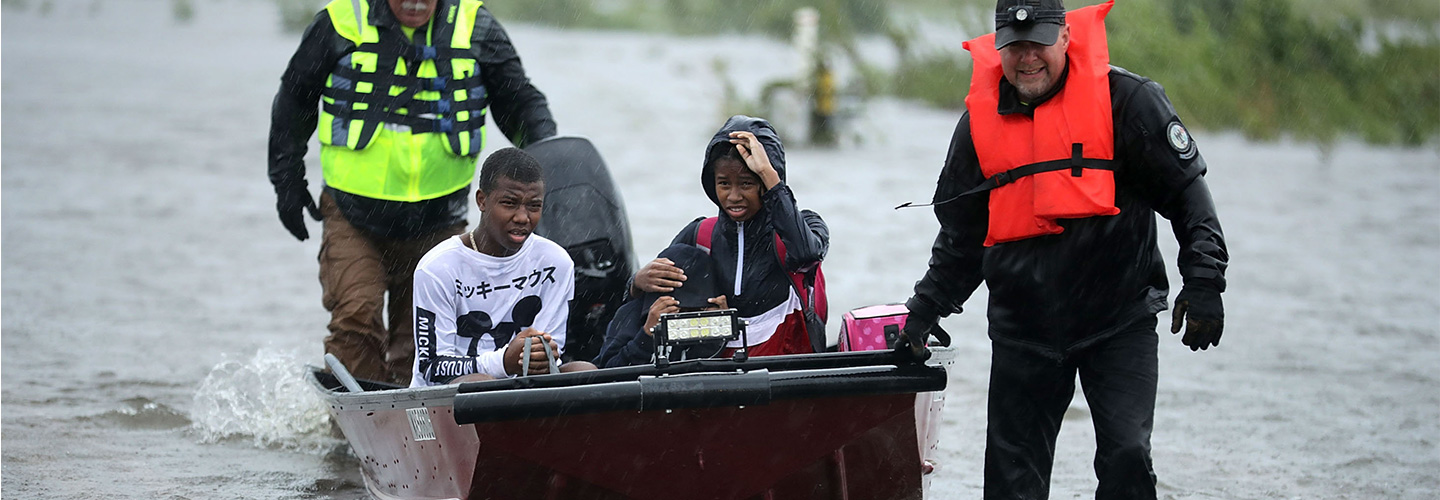People in the Carolinas are battling widespread flooding caused by Hurricane Florence. The powerful storm hit North Carolina’s coast on Friday, September 14. Even as Florence’s winds have slowed over the past three days, it has continued to do serious damage. The storm’s record rainfall has swelled rivers, flooding roads and towns across North and South Carolina. At least 23 people have died as a result of the storm and more than half a million people have been left without electricity. Officials fear that the worst may not be over yet. On Sunday, Governor Roy Cooper of North Carolina warned that the storm has “never been more dangerous than it is right now.”



Volunteers help rescue three children from their flooded home in New Bern, North Carolina, on September 14, 2018.
Chip Somodevilla/Getty Images
Hurricane Florence Hammers the Carolinas
Waters rise across North and South Carolina as Hurricane Florence moves inland.
Jim McMahon/MapMan®
Storm Science
Hurricanes are some of the most destructive storms on Earth. The huge, spinning storms form over the ocean and can move onto land. The most powerful ones have wind speeds of up to 200 miles per hour. Hurricanes bring heavy rain and their winds can cause storm surges. A surge is when wind pushes ocean water onto land, causing flooding.
Hurricanes are rated on a scale of 1 to 5 based on how powerful they are. When Florence reached land, it was a Category 1 storm, the weakest level for a hurricane. This type of hurricane has winds of 74 to 95 miles per hour. As Florence moved onto land, the storm’s wind speeds slowed and it was downgraded from a hurricane to a tropical storm.
Still, meteorologists warn that Florence is a slow-moving storm that will continue to drop a lot of rain. More than 30 inches of rain have already fallen in some areas, and officials are concerned about dam and levee failures. (Dams and levees help prevent rivers from overflowing.) That could cause even more severe flooding and possibly lead to mudslides in mountainous areas.
Victor J. Blue/The New York Times/Redux
Cars and homes sit in floodwaters in New Bern, North Carolina, on September 15, 2018.
Surviving the Storm
Before the storm hit, more than 1.5 million people were urged to evacuate coastal areas. Many packed up and moved inland. More than 25,000 people are riding out the storm in shelters across the Carolinas.
Some towns, like Wilmington, North Carolina, have been completely cut off, and officials are flying in food and water for stranded residents. Meanwhile, Florence is expected to last for another couple of days, and flooding might continue after it passes. Recovery could take weeks.
“This remains a significant disaster that affects much of our state,” Governor Cooper said on Monday afternoon. “The next few days will be long ones as the flooding continues.”
NOAA.gov
A satellite view of Hurricane Florence on September 12, 2018
1. What are some ways that Hurricane Florence is affecting people?
2. What is the purpose of the section “Storm Science”?
3. Explain what happened as Hurricane Florence moved onto land.
4. How are officials helping people affected by the storm?
